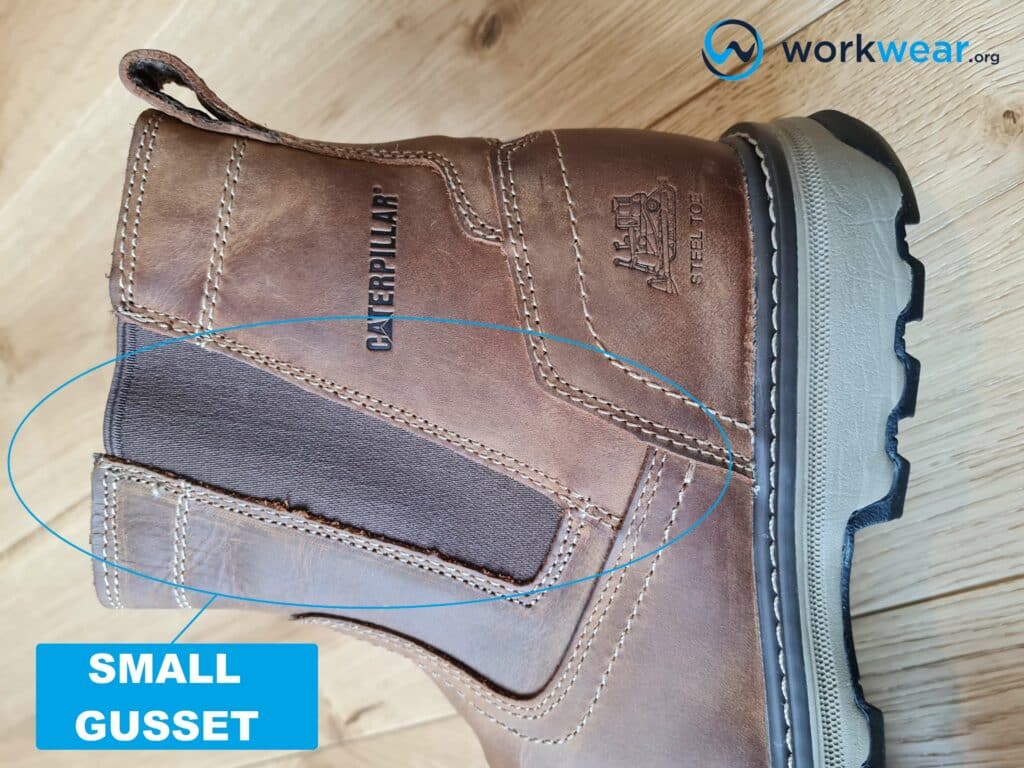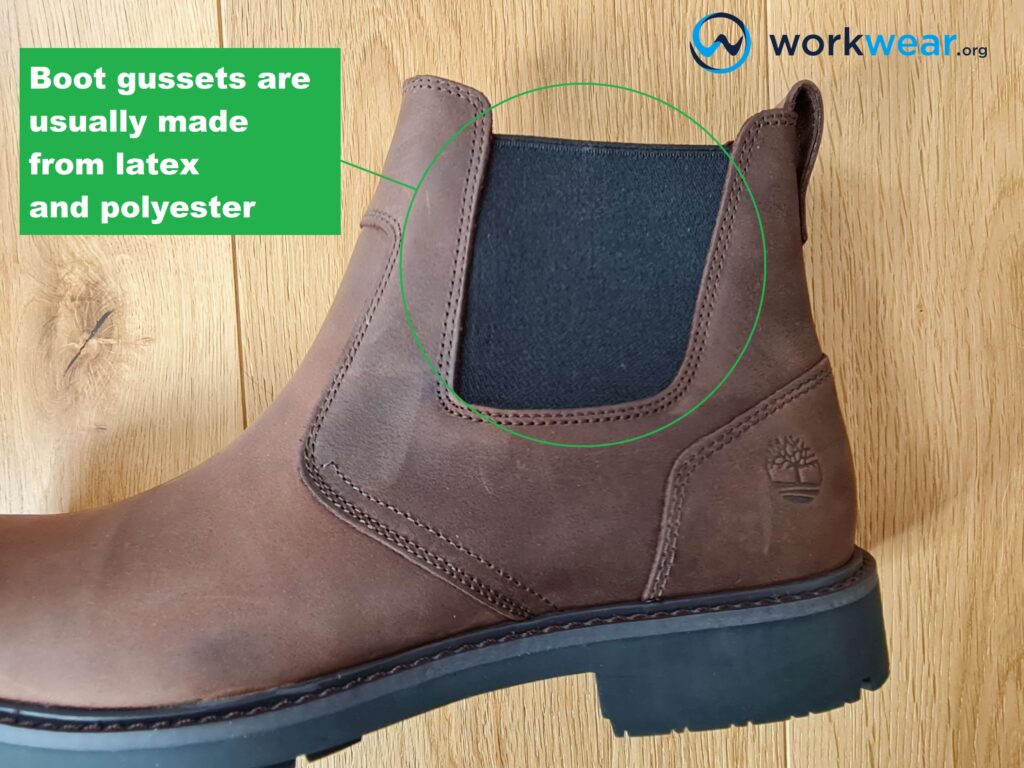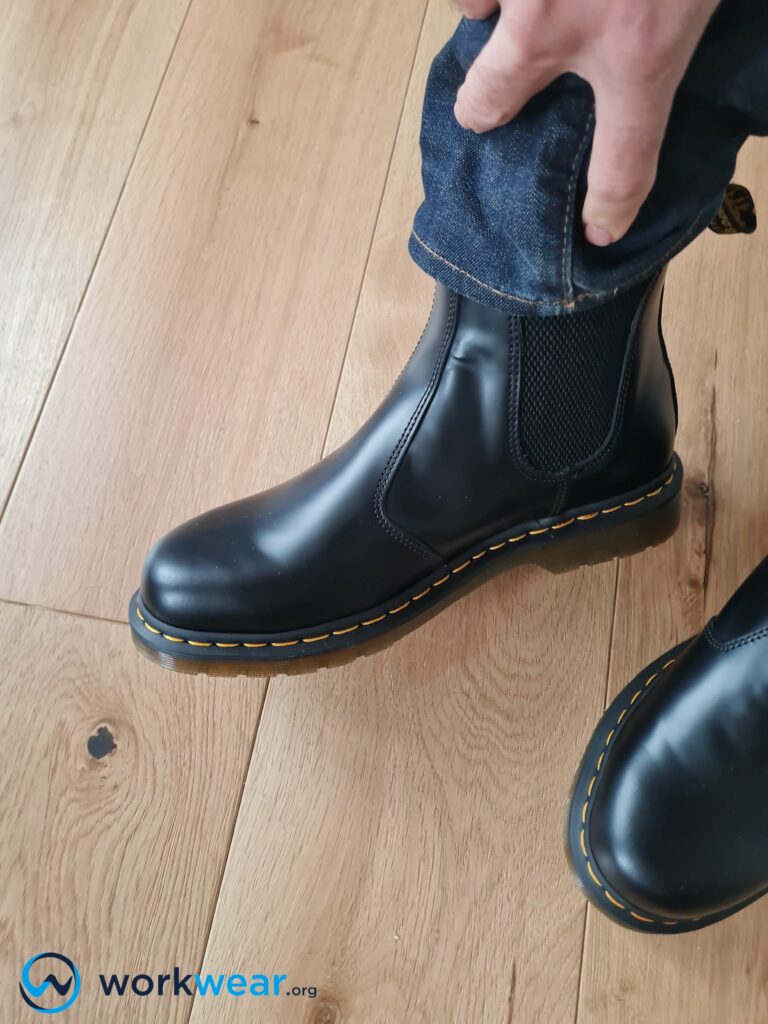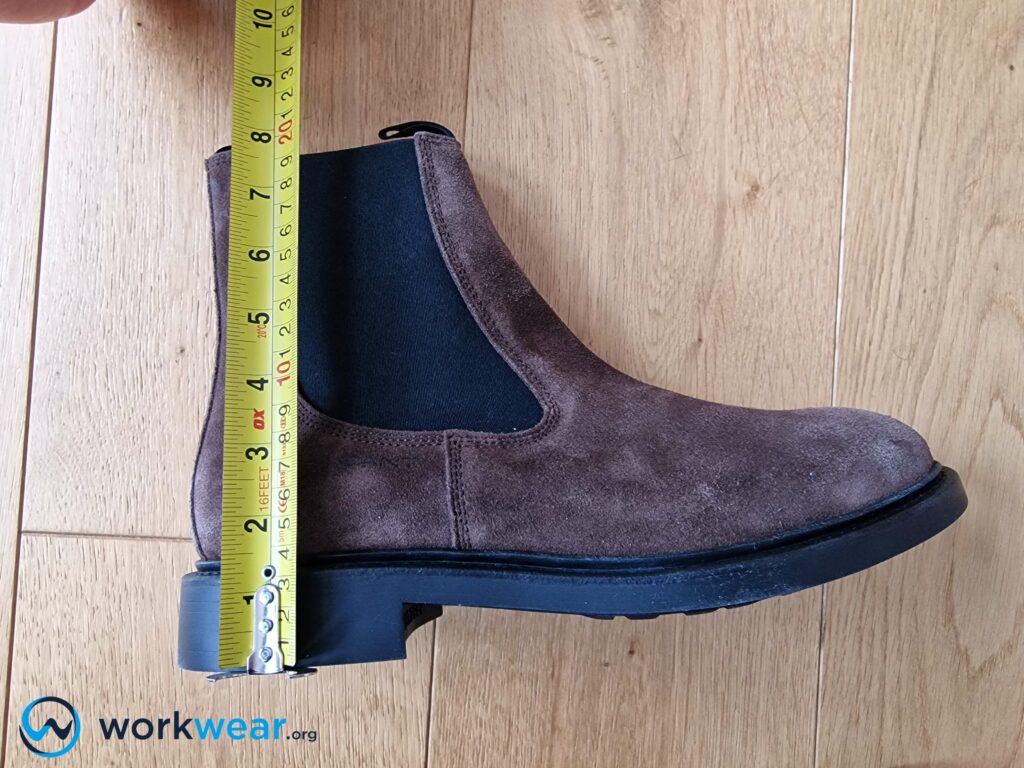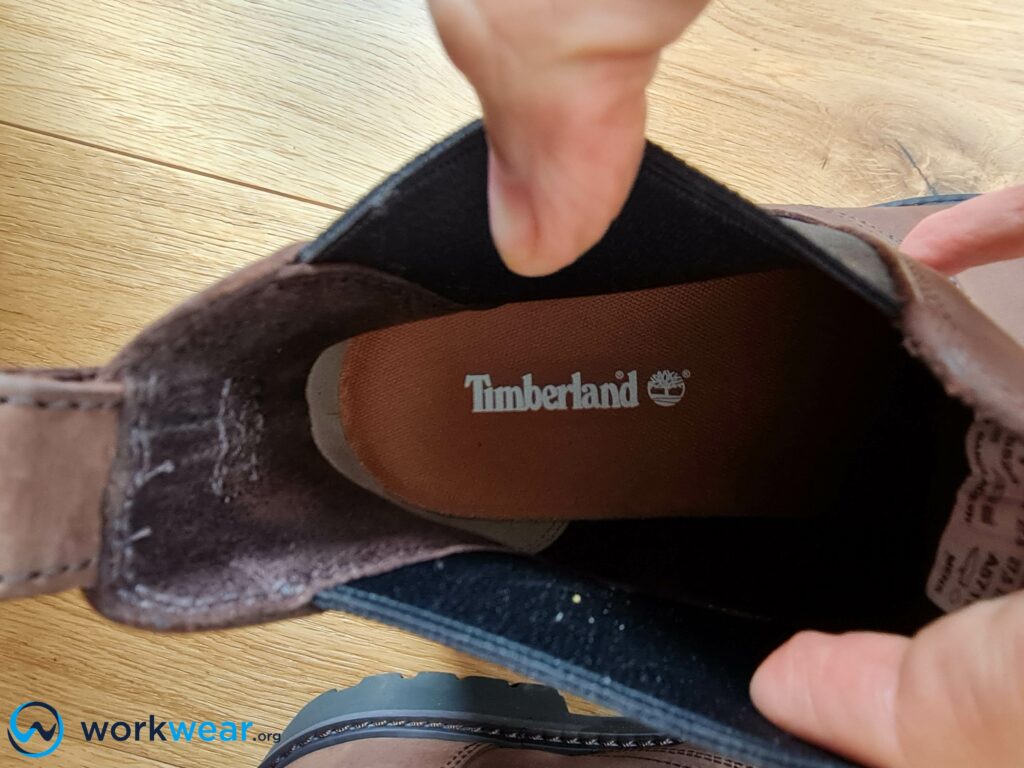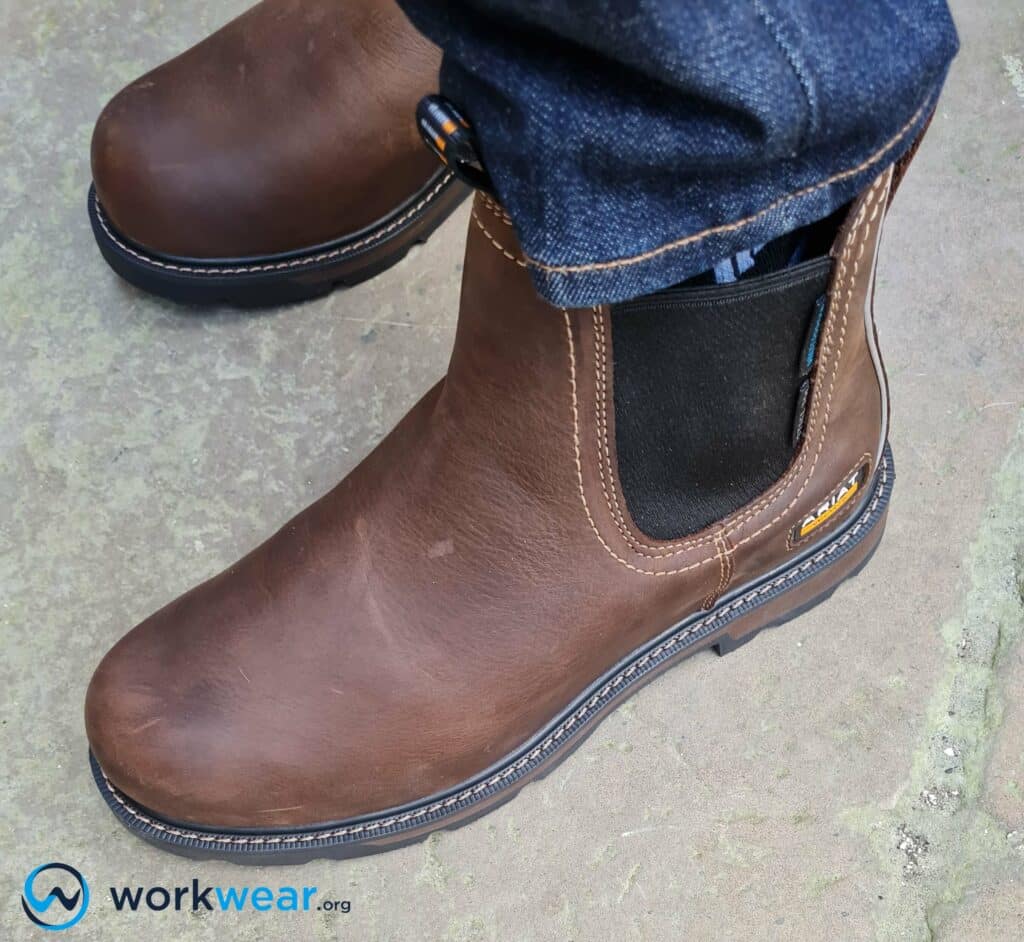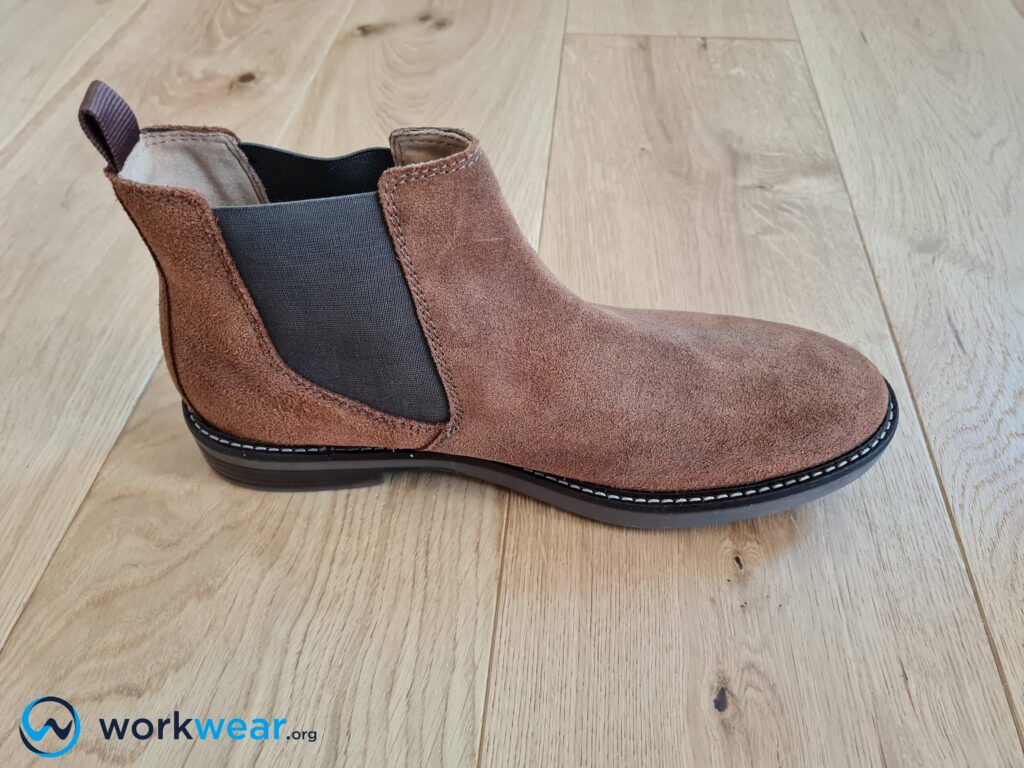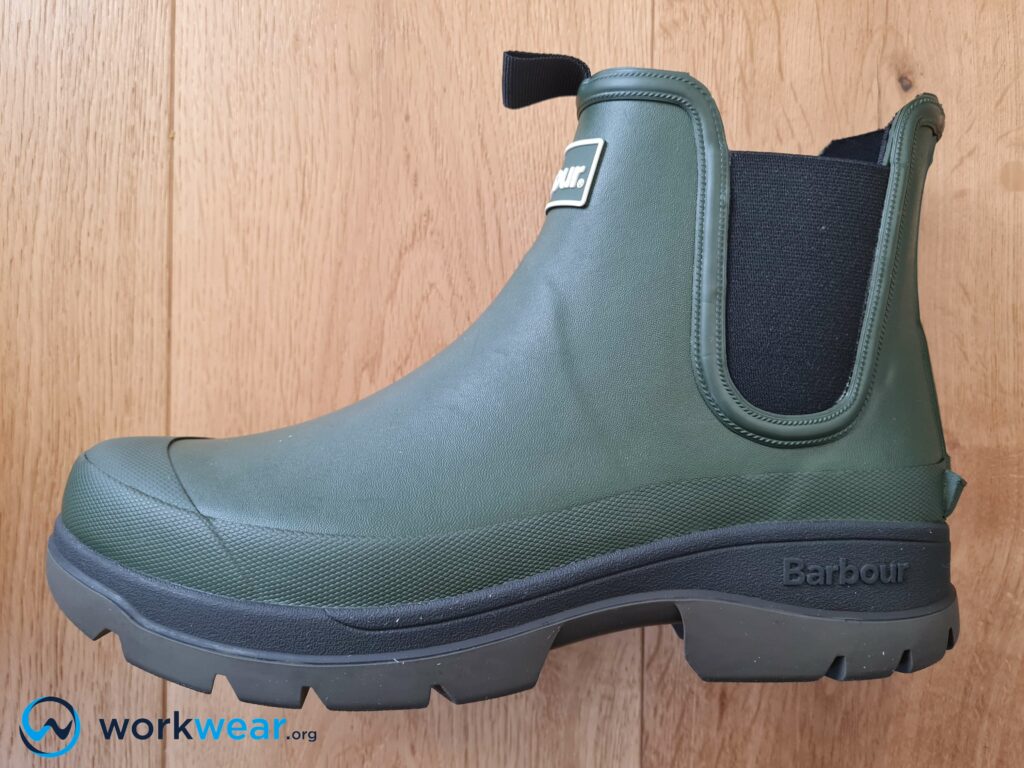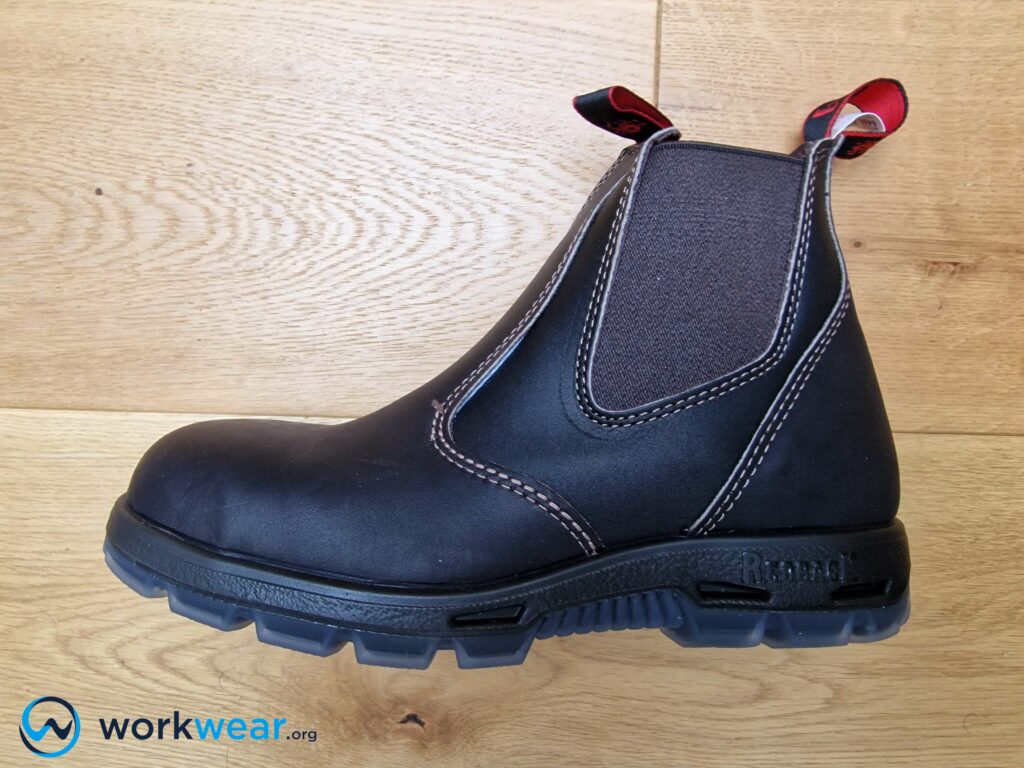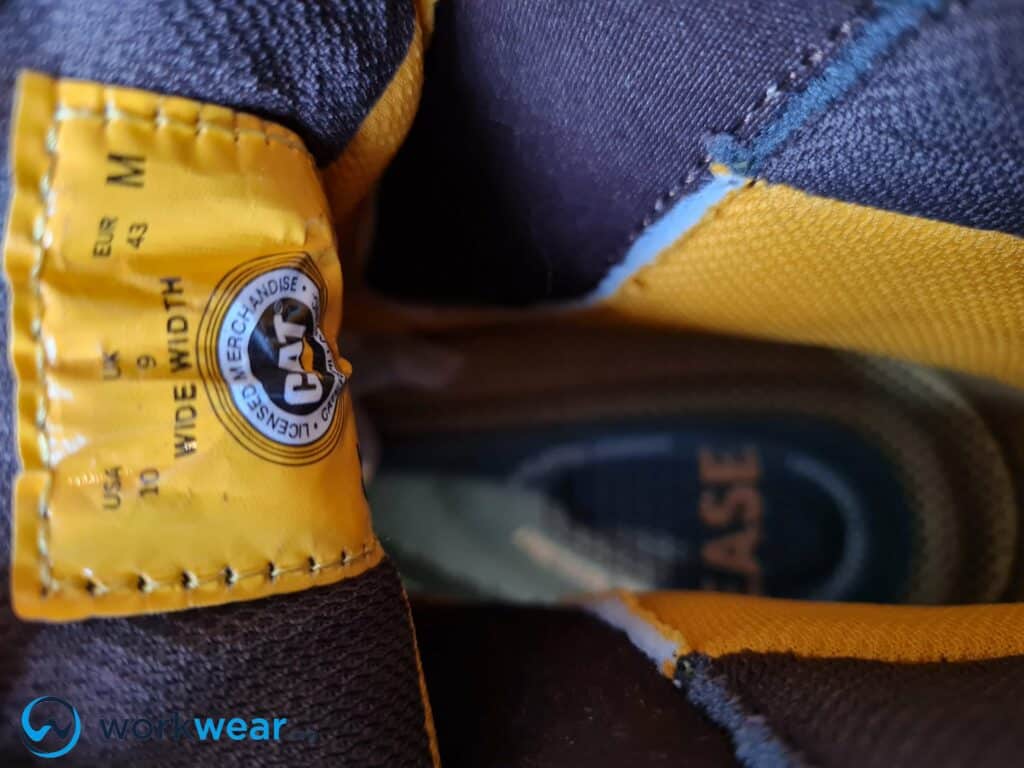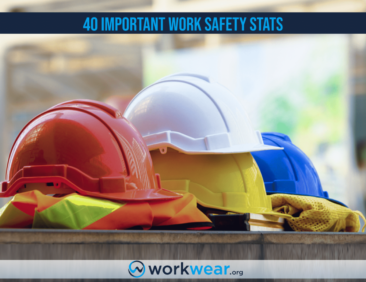Gussets in Boots – Demystified & Explained
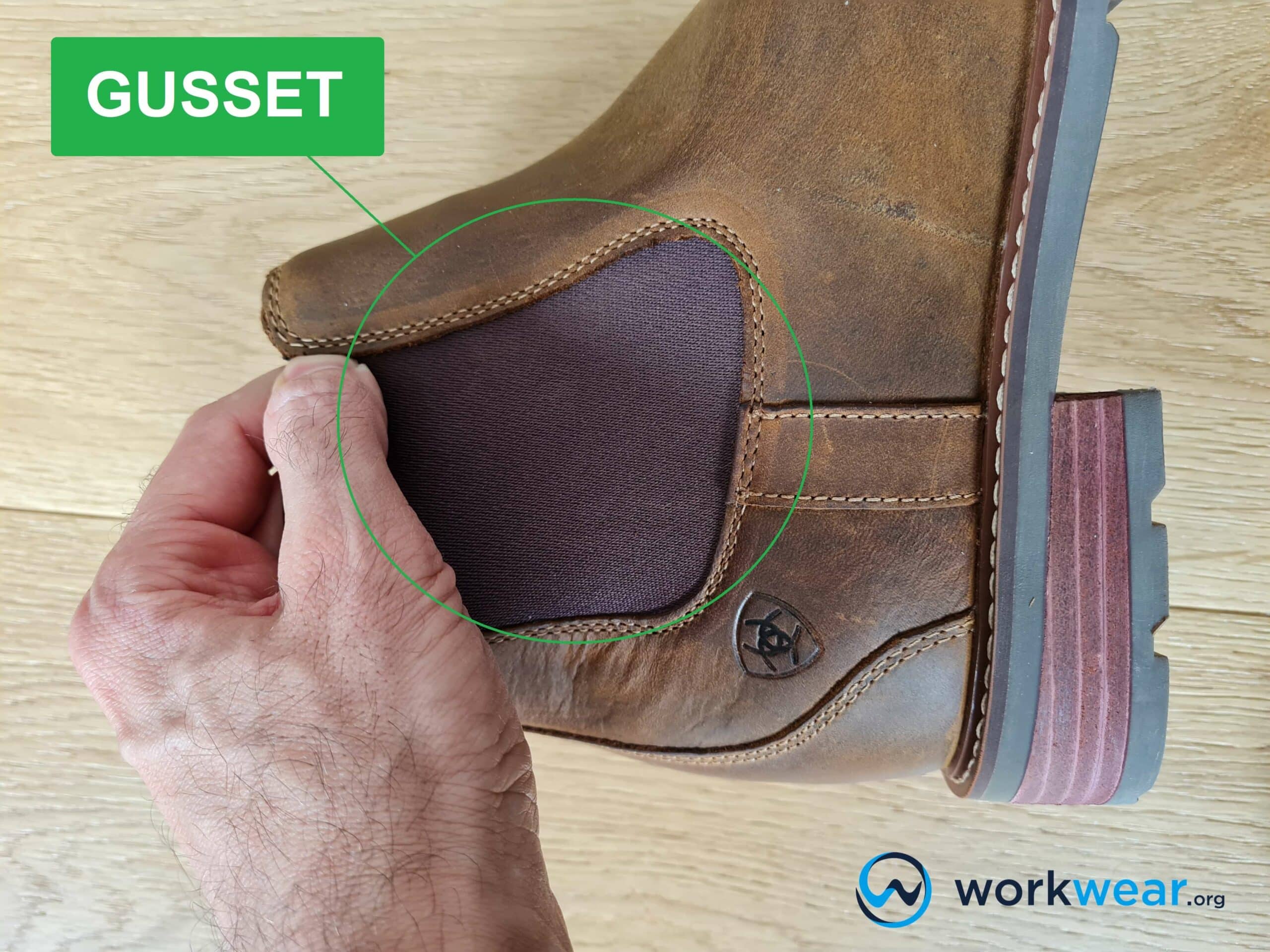
Putting on your boots at the start of a workday should take little time, especially when you use pull-on boots. There are times, though, when pulling on those boots – even the lace-free ones – can be a bit of a challenge.
Side gussets in boots significantly make the boot-wearing process much comfier and easier to deal with.
These elastic sections are added to pull-on boots so that the opening stretches as needed. This results in the boots becoming more comfortable and quicker to put on and take off. In this article, we’ll get to know boots’ side gussets more and appreciate them further as they serve as functional enhancements to your reliable work boots.
Key Takeaways
Gussets in boots make it easier for the boots to be pulled on and removed. They’re made with elastic materials that instantly stretch to welcome the foot, eliminating the risk that the skin will painfully scrape on the leather upper or inner lining.
The side gussets in boots are made with heavy-duty elastic materials, which usually have polyester (for durability) and latex (for elasticity). These sections can be replaced when they’re frayed or damaged. It’s best to have the replacement done by experts to avoid damaging the boot’s leather parts.
Aside from making it easier for the boots to be pulled on and off, side gussets also help with breathability, easily go back to their original form to maintain the boot’s aesthetic appeal, and are ideal for wide feet and calves.
Gussets in boots are often seen in Chelsea boots that have ankle-high styles. These boots are easy to put on and off, with sleek and stylish profiles for indoor office and casual use. Chelsea styles are also seen in some work boots that may be tough and protective enough to take on various demanding job environments.
Boots with elastic sides may also be made with rubber, such as rain boots and garden boots. These styles are made easier to wear, thanks to the side gussets that flex just enough to allow the feet to get in and out comfortably.
What are Gussets in Boots
Gussets are knit elastic material that instantly flexes, following the foot’s movement for superior comfort and unrestricted mobility.
Gussets may sometimes refer to the gusseted or bellows tongue in boots, but in this article, we’ll focus on the gussets placed on the sides of the boots’ opening.
Gussets are the non-leather, elastic sections sewn into the boots’ sides.
They enable the boots’ opening to widen as needed so that the feet can more effortlessly slip in with minimal discomfort.
These components are sometimes called elasticated (or elastic) side panels, describing their ability to stretch the boot’s opening.
The material’s elasticity makes the boot more welcoming to the foot’s entry. Gussets are usually placed on both sides of the boot on top and are often combined with pull tabs (at the back and front of the boot’s opening) for better accessibility.
What are Side Gussets Made Of
The base material is a mixture of latex and polyester. This combination makes the gusset elastic and strong enough to withstand being stretched countless times when fitted onto work boots.
The same material is used for other products, including clothing, bags, belts, and accessories. The elastic material is fitted between the leather sections of the boot’s opening, where they will be sewn into place to improve the fit of the footwear. The elastic sections can come in varying widths corresponding to the area on the boot’s opening that needs to be filled in.
Elastic gussets on boots often come in black or brown colors.
The color used may depend on the color of the leather upper, with most black leather boots fitted with black side gussets, while brown boots typically have brown elasticated gussets. However, there are some instances when black gussets are placed onto brown leather boots. In such cases, the side gussets offer the same functional benefits but create a more striking boot appearance with contrasting colors.
Benefits of Side Gussets on Boots
Make boots easier to put on and pull off
Boots with side gussets are easier to pull on and off compared to pull-on boots that don’t have these enhancements.
The elastic side panels stretch just enough to let the foot push in without the need to spend a long time in the process. In addition, the boot opening widens a bit as needed so that the foot can enter and exit easily and a lot more comfortably – which isn’t always the case when using regular pull-on bots without side gussets.
Ideal for wide feet and calves
Those with wide feet and calves can have an uncomfortable time getting boots on and off.
They’re at risk of scraping their skin against the leather or inner lining of boots with tight openings, especially if the boots are on the tall side.
Boots with side gussets can quickly widen to welcome the foot’s entry or exit.
These processes become much comfier for people with wide feet or calves, which can slide in or out of the boots more effortlessly.
Help with breathability
The elastic material used for side gussets allows more air into the boots.
The knit design welcomes air and keeps it flowing freely throughout the boot so that the feet can stay cool and fresh for longer, even when used in humid or hot conditions.
The breathable elastic sections also allow moisture and heat to disperse quickly before the feet feel overly warm or too sweaty.
Elastic panels go back to their original form
High-quality elastic side gussets naturally spring back to their original form after being stretched when the foot enters or exits the boot.
The boot’s opening maintains its streamlined appearance as the elastic sides de-stretch, which also keeps the ankle stable for safer walking across varying surfaces.
Can Side Gussets be Replaced?
Yes, side gussets can be replaced. Doing this may be necessary if the panels start to deteriorate with heavy or long-term use, after which the stretchy quality can be compromised.
The side gussets need to be replaced to ensure that they will still be able to do their main purpose – to widen the boot’s opening to accommodate the foot’s entry and exit better.
Replacing the side gussets will also be needed if their ability to return to the original form is compromised. If this happens, the boot’s opening can become too loose, resulting in weaker ankle support, making walking unstable and unsafe.
Although some people may think replacing the side gussets is okay, we recommend leaving this project to the professionals instead.
Getting the side gussets removed and replaced professionally eliminates the risk of the boot’s leather components being ruined, which is a great risk if the steps are incorrectly done by someone who needs to have the proper knowledge and experience.
Having the side gussets replaced by experts can ensure that the boots will be taken care of and that the new elastic panels will look and perform their best.
What Types of Boots Have Gussets?
Chelsea Boots
Chelsea Boots Side gussets are typically seen in Chelsea boots, although not all Chelsea boots are fitted with these elastic sides.
These boots usually have streamlined, ankle-high profiles that are meant to be pulled on without a lacing system. The elastic panels on the sides of the boot’s opening flex with the foot’s movement for unrestricted motion. They also make the boot easier to put on and remove. Chelsea boots may have pull tabs at the back (or at the back and front) of the opening, helping minimize the stress on the elastic gussets when the boots are pulled on or off.
This style is often associated with stylish boots that are more suitable for less rugged settings (such as indoor offices), but they can also be seen in work boots.
Rubber Boots
Although rare, rubber boots sometimes come with elastic sides as well.
This enhancement can be fitted on rain boots with tall shafts, but it can also be placed on shorter garden boots.
The elastic sides help make tall rubber boots much easier to slip into and out of and may be complemented with a strap and buckle that allow fit adjustments. In addition, side gussets in rubber boots are often treated to repel water so that the boots’ waterproofing can be maintained throughout their whole structures.
Slip-On Work Boots
Work boots with slip-on styles don’t have laces, so the feet can more quickly slide into them – especially with the help of side gussets.
Slip-on work boots have different features and can cater to varying work settings. Some of these boots have safety toes and other protective qualities, such as electrical hazard protection and puncture resistance. Even the ones with soft toes are typically built to keep up with the demands of specific workplaces, with features such as waterproofing and energy absorption that provide functional and comfort benefits to the feet while on the job.
Personal Testing Experience
We had the chance to test 3 boots with side gussets but varying qualities, making them suitable for different jobs and work conditions. The Caterpillar Pelton Steel Toe Work Boot delivers outstanding shock absorption in a comfortable pull-on design with side gussets. It has a casual style yet showcases safety enhancements, including steel toes and a puncture-resistant midsole for superior protection – but the relaxed can may feel unstable at times. Meanwhile, the Barbour Nimbus Boot built with vulcanized rubber, delivers strong waterproofing, making it ideal for gardening and other tasks with exposure to wet conditions. This comfortable rubber boot is easy to get on and off, thanks to the side gussets in place. It offers exceptionally strong traction, although the loose fit can feel doesn’t hold the ankle in a secure position. Finally, the Redback Bobcat Chelsea Boot comes with steel toes that shield the toes against injuries from impact and compression threats. This waterproof boot is ideal for hazardous work areas, with exceptional traction to maintain stable footing across tricky surfaces. This is a comfortable boot, but it does feel heavier than boots with almost the same features.
Conclusion
Gussets in boots make the boot-wearing experience more comfortable and much easier to manage. The gussets are fitted into the sides of the boot’s opening and easily stretch to accommodate the foot’s entry and exit. They use heavy-duty elastic materials that can withstand being used heavily, especially for work boots that take a beating with daily use in often challenging surroundings. Boots with side gussets don’t restrict the foot’s natural motion, although the lack of a lacing system means that these boots’ fit can’t be adjusted or personalized.
FAQs
- Do elastic side gussets on boots prevent liquids from entering?
- Only sometimes. If it needs to be specified, gussets on boots are typically not waterproof so they can let water and other liquids in upon exposure to wetness. However, waterproof side gussets are designed to keep up with the rest of the boots’ waterproof features to seal out wetness.
- Is it okay to use elastic material on boots with side gussets?
- It’s important to use a heavy-duty rib-knit material for side gussets in boots, especially if they’re used for work. This ensures that the elastic panels will not easily be damaged even when the boots are extensively used. However, it’s equally important for the material to be stretchy enough but quickly spring back into its original form so that the boots can maintain their function and appearance.
- Do boots with side gussets offer strong ankle support?
- Boots with side gussets are designed to be pulled on and don’t have laces, so their fit can’t be customized. As a result, this design doesn’t offer the strongest ankle support but can be enjoyed when wearing boots with a lace-up structure.
- Won’t the gussets be damaged by repeated pulling when putting the boots on?
- The elastic material of side gussets is durable and won’t easily break apart – but to protect them from premature damage, pull tabs are fitted into the back or the front and back sections of the boot’s opening. These tabs or loops can be used to pull on the boots, so there’s no need to pull on the elastic sections directly.
678+
Products Reviewed
24+ Years
Combined Experience
500+ Hrs
Field Testing
